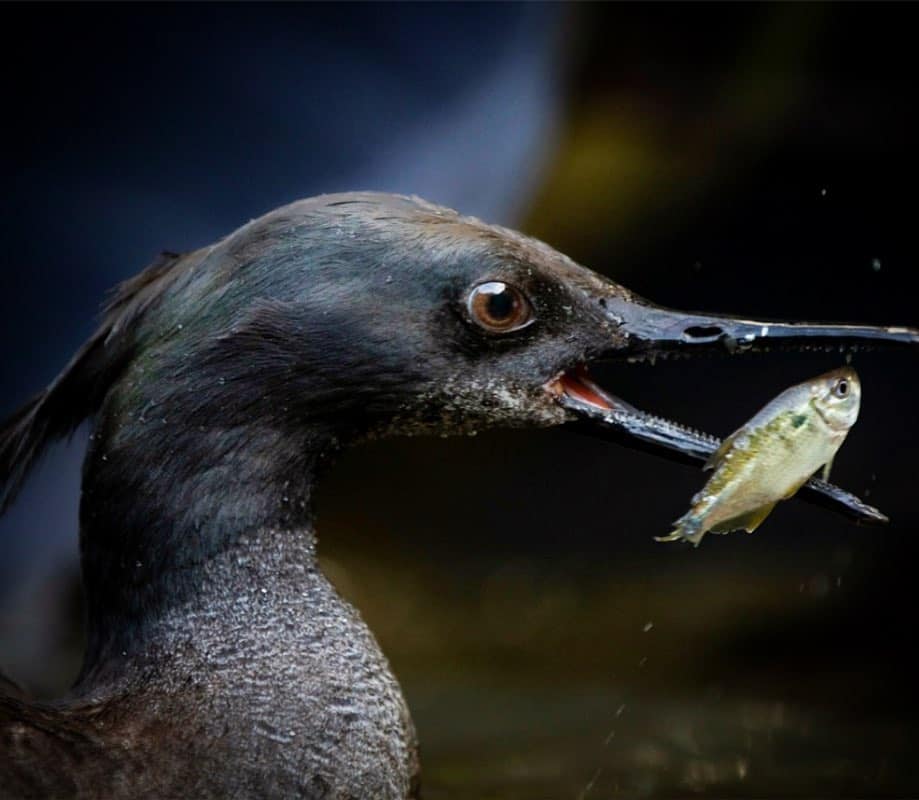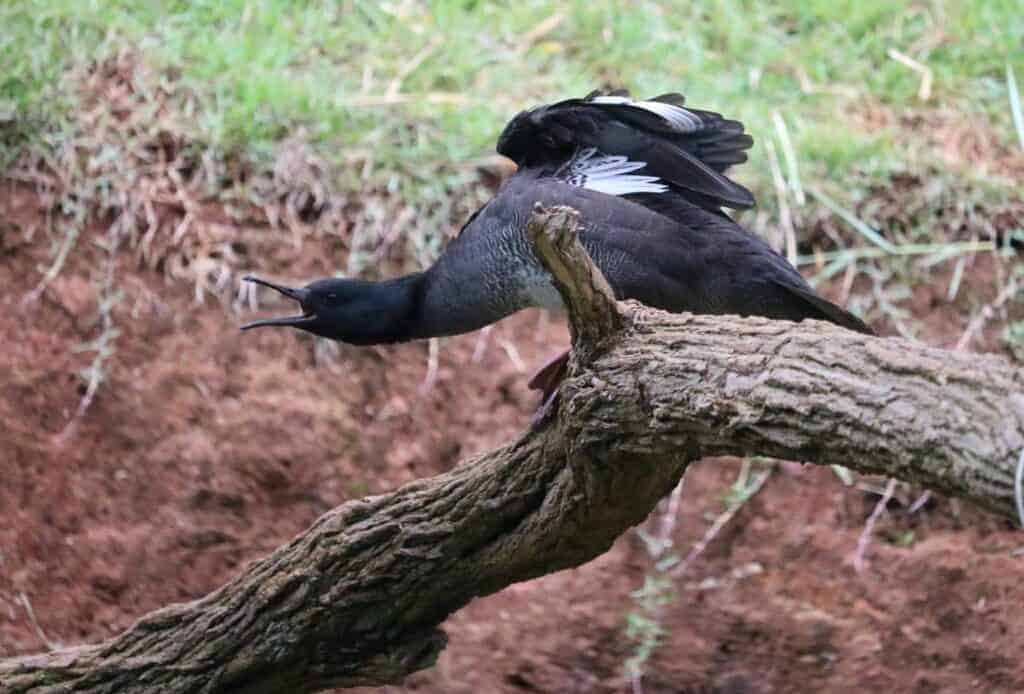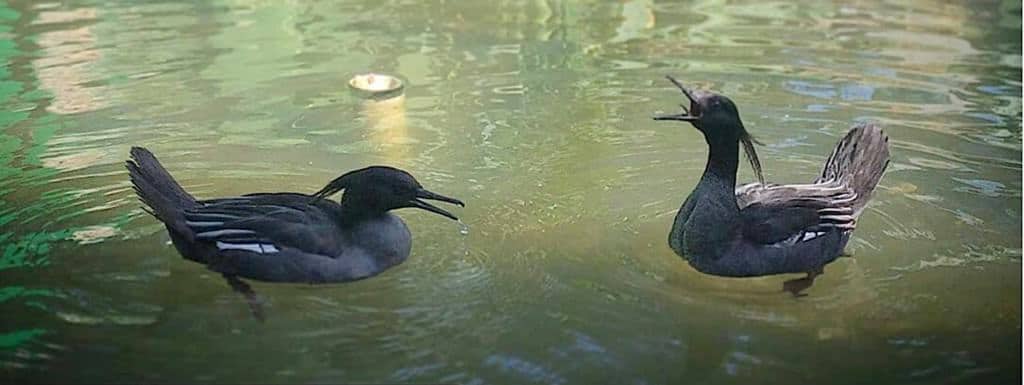Brazilian Merganser

It is estimated that the total population of the Brazilian Merganser is less than 250 birds. This duck was bred in captivity for the first time at a private zoo in Brazil in 2017; part of a conservation breeding plan to help ensure the survival of this fascinating species. The captive population currently has 29 individuals, fruits of the successful collection of eggs in the wild. Some of these birds have already reached sexual maturity, and the captive population is thriving.


Mergus octosetaceus
One of the most threatened of all the world’s wildfowl, the little-known Brazilian Merganser is listed by the IUCN as Critically Endangered. A typical merganser, favouring fast-flowing clear rivers with rapids, it is found in just a few scattered localities in south-central Brazil, and has apparently been lost from Argentina and Paraguay. Unlike the northern-hemisphere mergansers, the sexes of this species are similar, both having dark-green heads with spiky crests. They are monogamous.

Non migratory, these ducks need large territories, and habitat destruction (including damming of their rivers) has been responsible for their decline. Tourism is also a problem: they are easily disturbed by canoeing and rafting. Crystal clear water is vital to their survival and they do not tolerate human disturbance.

Water quality changes as a result of construction and pollutants such as pesticides, fertilisers and organic discharges, such as residential sewage, are the main factors that threaten the species. Local extinctions have been reported in different locations throughout their distribution and the remaining populations are extremely small and fragmented.
Preferred nesting habitats are cracks in rocks, hollows of trees and earth banks along the river. The female lays up to eight eggs between May and September. The ducklings leave the nest the day after hatching, staying with their parents for about six months.